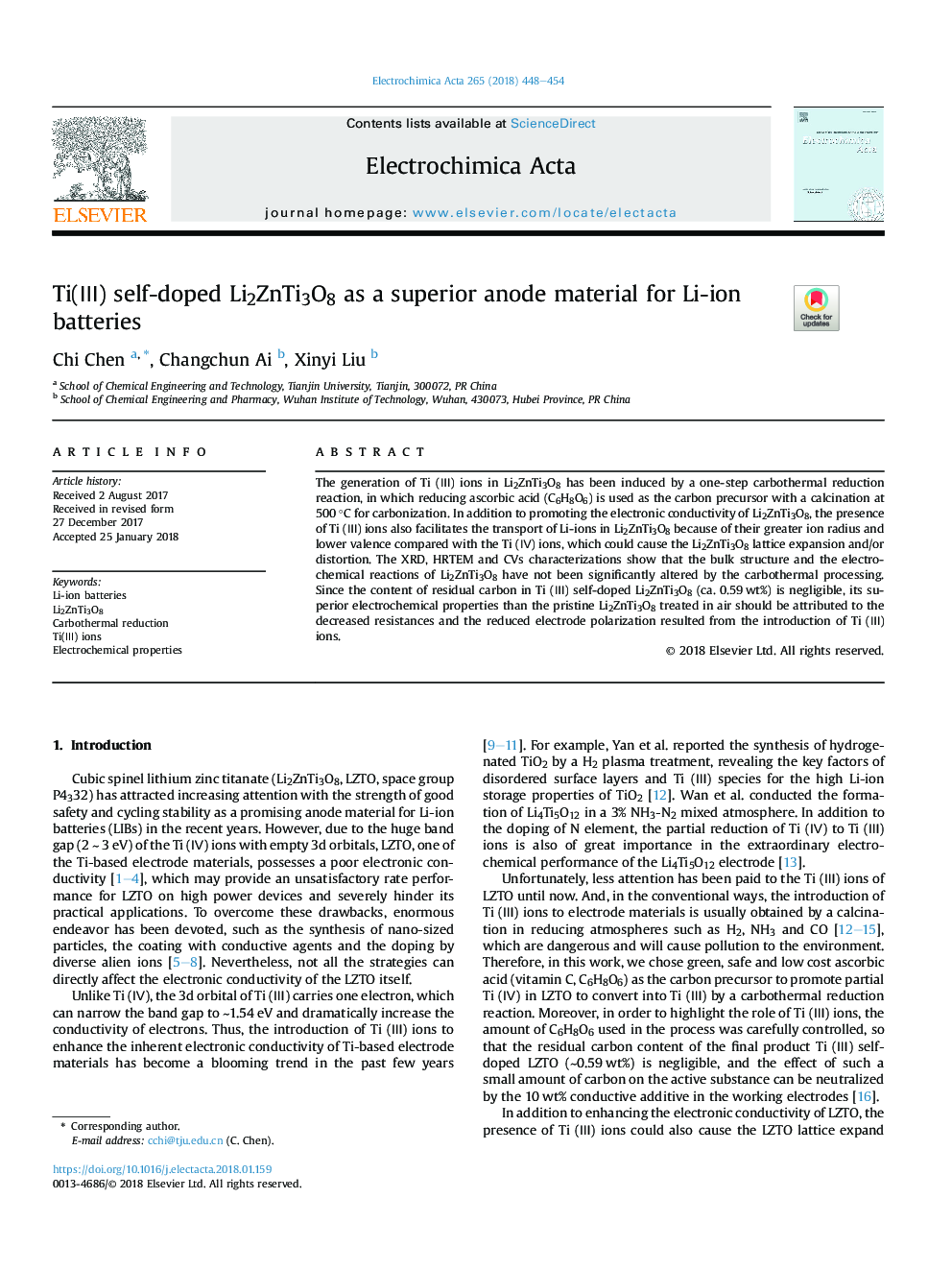| Article ID | Journal | Published Year | Pages | File Type |
|---|---|---|---|---|
| 6604170 | Electrochimica Acta | 2018 | 7 Pages |
Abstract
The generation of Ti (â
¢) ions in Li2ZnTi3O8 has been induced by a one-step carbothermal reduction reaction, in which reducing ascorbic acid (C6H8O6) is used as the carbon precursor with a calcination at 500â¯Â°C for carbonization. In addition to promoting the electronic conductivity of Li2ZnTi3O8, the presence of Ti (â
¢) ions also facilitates the transport of Li-ions in Li2ZnTi3O8 because of their greater ion radius and lower valence compared with the Ti (â
£) ions, which could cause the Li2ZnTi3O8 lattice expansion and/or distortion. The XRD, HRTEM and CVs characterizations show that the bulk structure and the electrochemical reactions of Li2ZnTi3O8 have not been significantly altered by the carbothermal processing. Since the content of residual carbon in Ti (â
¢) self-doped Li2ZnTi3O8 (ca. 0.59â¯wt%) is negligible, its superior electrochemical properties than the pristine Li2ZnTi3O8 treated in air should be attributed to the decreased resistances and the reduced electrode polarization resulted from the introduction of Ti (â
¢) ions.
Related Topics
Physical Sciences and Engineering
Chemical Engineering
Chemical Engineering (General)
Authors
Chi Chen, Changchun Ai, Xinyi Liu,
